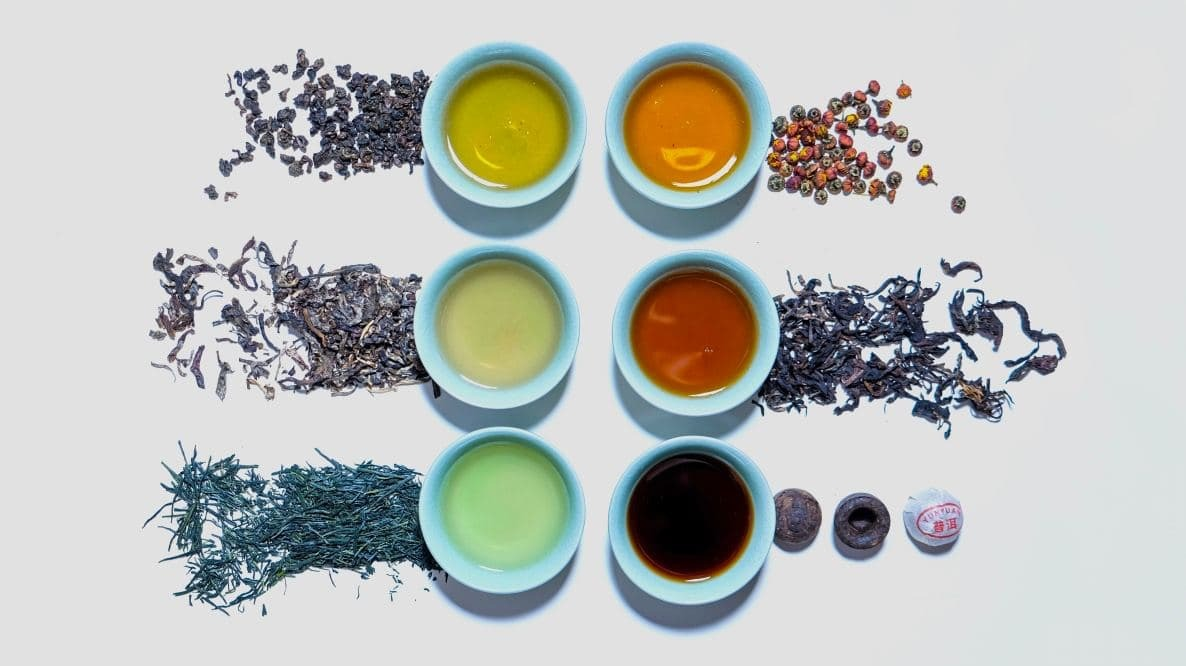
The 6 types of tea
All tea comes from just one plant, Camellia sinensis.
This is the first of many facts that surprise even the most enthusiastic tea drinker.
There are six basic types of tea: white, green, yellow, oolong, black and dark, all of them originate only from the leaves of Camellia sinensis.
The basis of any classification of tea is usually related to the degree of oxidation to which the tea has been subjected, much like the browning of an apple; this process influences flavour but also impacts on the method you should choose for brewing.
Depending on the type of tea being made, this process will occur over a short or long time.
Let’s look at all six types of tea.
White tea: This leaf is generally only picked and air-dried. It is usually harvested in the spring, when there are fresh new leaves and the unopened buds are still covered with silky white hair.
During the drying process there may be some oxidation, which stops naturally when enough moisture evaporates from the leaf.
Green tea: When the leaf is picked and then heated almost immediately by pan-firing or steaming, oxidation is prevented.
The typical taste notes of a pan-roasted tea involve fruity characteristics overlaid with elements of toastiness, while liquor is usually straw coloured to amber.
A steamed green tea has a more spinachy-vegetal note as the predominant taste characteristic.
Wulong (oolong) tea: Picked and often bruised to encourage interactions between the leaf’s enzymes and polyphenols, this style is allowed to partially oxidize before undergoing shaping and heating. Often regarded as a middle ground between black and green, this type of tea requires great skill to make, and yields a wide range of flavor and fragrance.
Yellow tea: There remain even professional tea tasters who have never tasted a yellow tea, so rarely are they found! This type is made much like green tea, but it is heated to a lower temperature. More moisture is retained in the leaf, which is then allowed to dry slowly and oxidize slightly over a low charcoal fire for a few days. Yellow tea takes more effort and time to produce than green tea, which is why it is now increasingly hard to find.
Black tea: This type of tea likes as much oxidation as possible. First the leaf is withered, losing moisture, stiffness, and weight. Then it is rolled, which encourages oxidation by breaking open cell walls. After several hours’ rest. it is fired.
Dark tea: Our final category is dark tea, the most famous of which is pu-erh, named for the Yunnanese county where such teas were traditionally traded. Dark teas are so called because of a microbial fermentation period that acts to darken the leaves. They are roughly processed as green tea then set aside to age and mellow, the passing of time has the effect of lending secondary flavours to the leaves.





